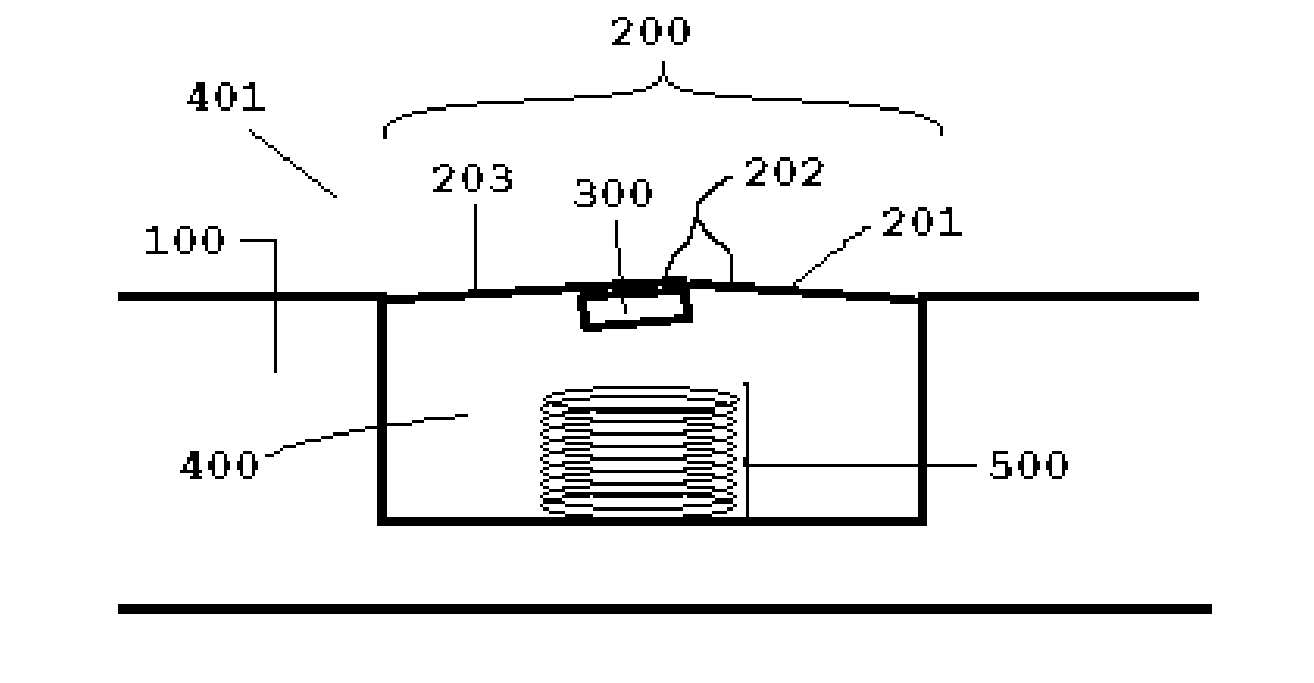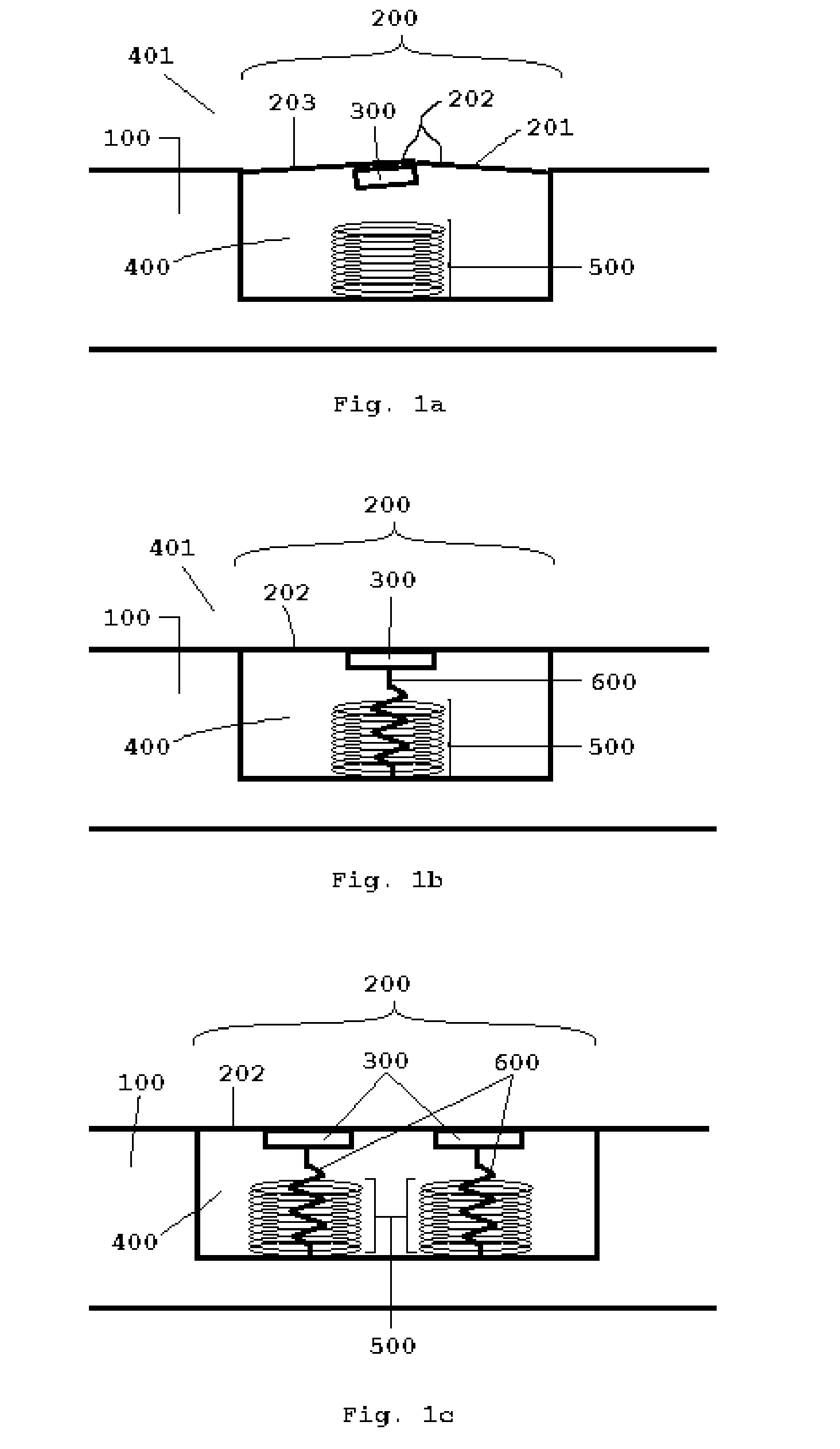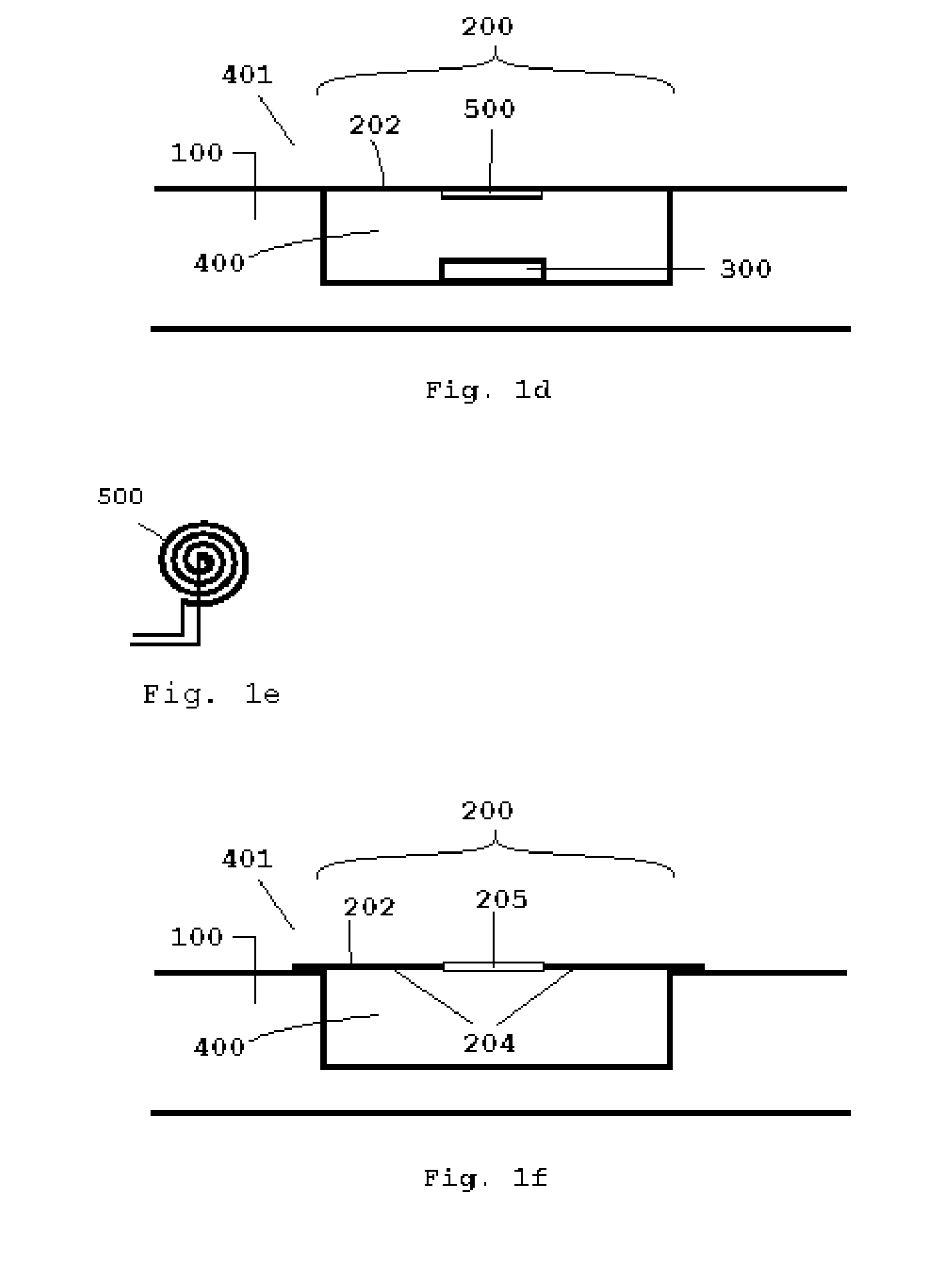Tunable Fluid Flow Generator
a generator and fluid flow technology, applied in the direction of electric generator control, machines/engines, mechanical equipment, etc., can solve the problems of reducing fuel efficiency, limiting the practicality of their application in certain fields, and the aerodynamic limitations of the turbine are not ideal for vehicular applications, so as to reduce or prevent the movement of the contact portion
- Summary
- Abstract
- Description
- Claims
- Application Information
AI Technical Summary
Benefits of technology
Problems solved by technology
Method used
Image
Examples
Embodiment Construction
[0050]Some embodiments of the invention are described below in further detail with respect to the Figures.
[0051]According to an aspect of an embodiment of the invention, a generator has a surface structure or contacting portion relative to a base structure or frame and is positionable within a field of flow. Preferably, the surface structure is connected to the base structure along the leading edge of the surface structure relative to the direction of flow such that the field of flow is directed substantially over the surface structure. The surface structure can be shaped in a number of ways when taking into account aerodynamics, including curvilinear, faceted, and angular shapes. Many structural shapes are known within the art and can be incorporated here to provide a desired level of aerodynamics for the particular application, such as aerofoils, wing shapes, spoilers, riblets, curved leading edges, etc. The surface structure design also helps to generate a motive force from the f...
PUM
 Login to View More
Login to View More Abstract
Description
Claims
Application Information
 Login to View More
Login to View More - R&D
- Intellectual Property
- Life Sciences
- Materials
- Tech Scout
- Unparalleled Data Quality
- Higher Quality Content
- 60% Fewer Hallucinations
Browse by: Latest US Patents, China's latest patents, Technical Efficacy Thesaurus, Application Domain, Technology Topic, Popular Technical Reports.
© 2025 PatSnap. All rights reserved.Legal|Privacy policy|Modern Slavery Act Transparency Statement|Sitemap|About US| Contact US: help@patsnap.com



